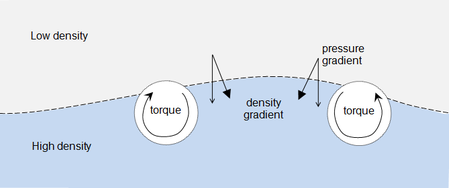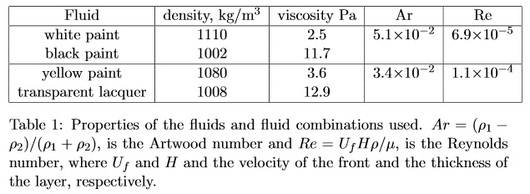Understanding Fluid Dynamics with David Alfaro Siqueiros
Although he did not realize it at the time, artist David Alfaro Siqueiros was in many ways an experimental fluid mechanic. Artists often through experimentation learn the properties and mechanisms of their materials. In the 1930s Siqueiros discovered a technique through his work that he called "accidental painting" in which layers of paint are poured on top of one another on a flat surface. If they are of different densities, they will mix and spread in unique and beautiful ways.
The designs he created were formed by an unstable density gradient called a Rayleigh-Taylor instability where the lighter density fluid pushes the heavier density fluid. The mixing and permeation of colors is caused by the imbalance between the paint densities due to different pigment types. The final look of the painting is also dependent on the surface tension and viscosity of the chosen pigments. With paints, these instabilities are preserved and can be viewed as the paint dries. Below is the data taken and calculated values of the Artwood number (a hydrodynamic instability ratio) and Reynolds number (a quantity used to predict flow patterns) used in Sandra Zetina's and Roberto Zenit's fluid dynamics experiment with this technique shown in the video below.


